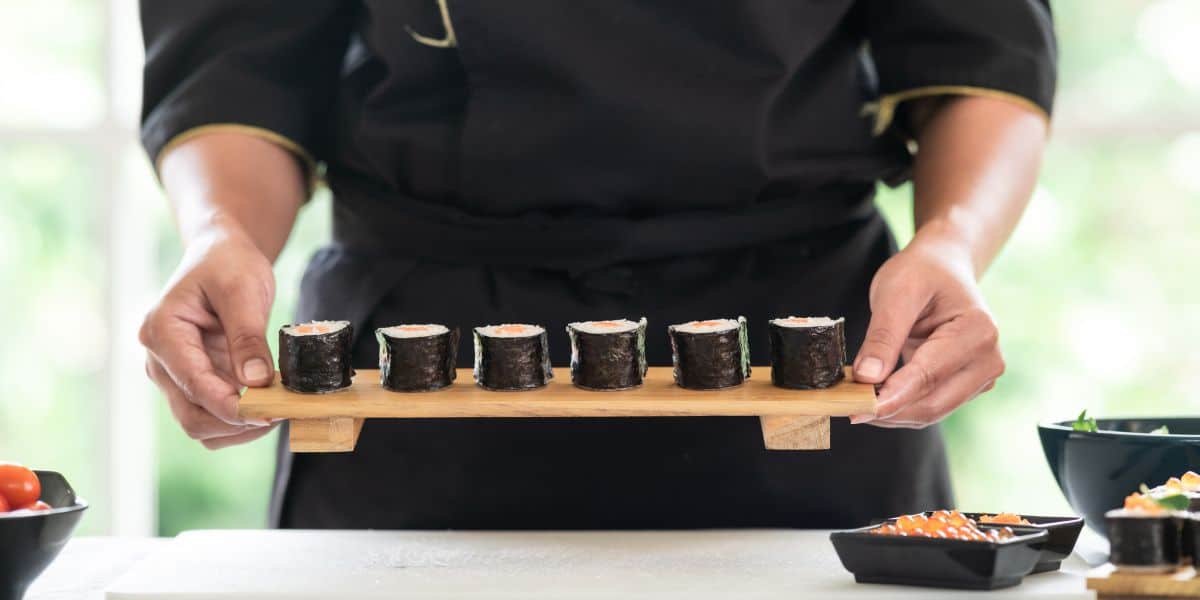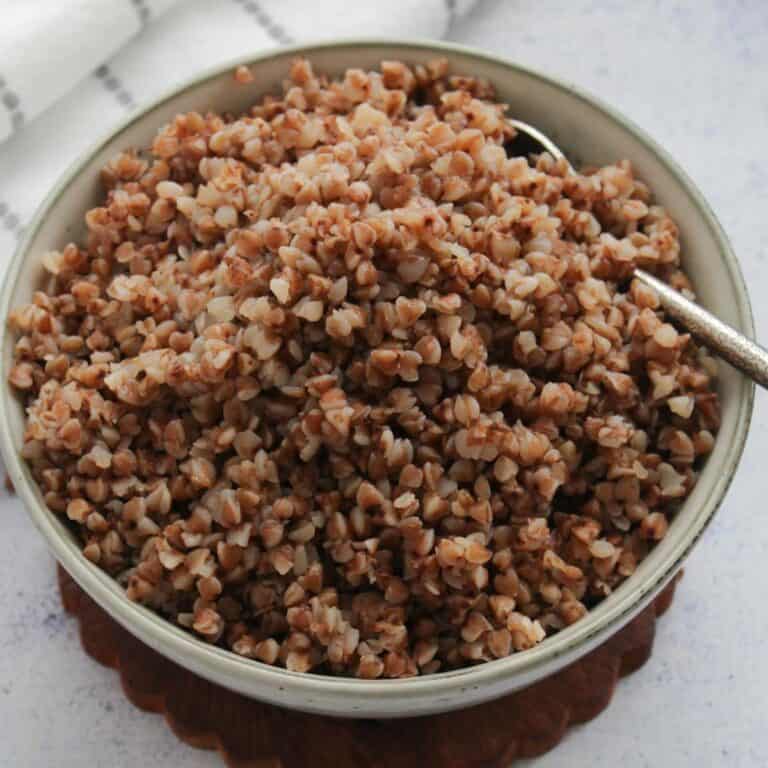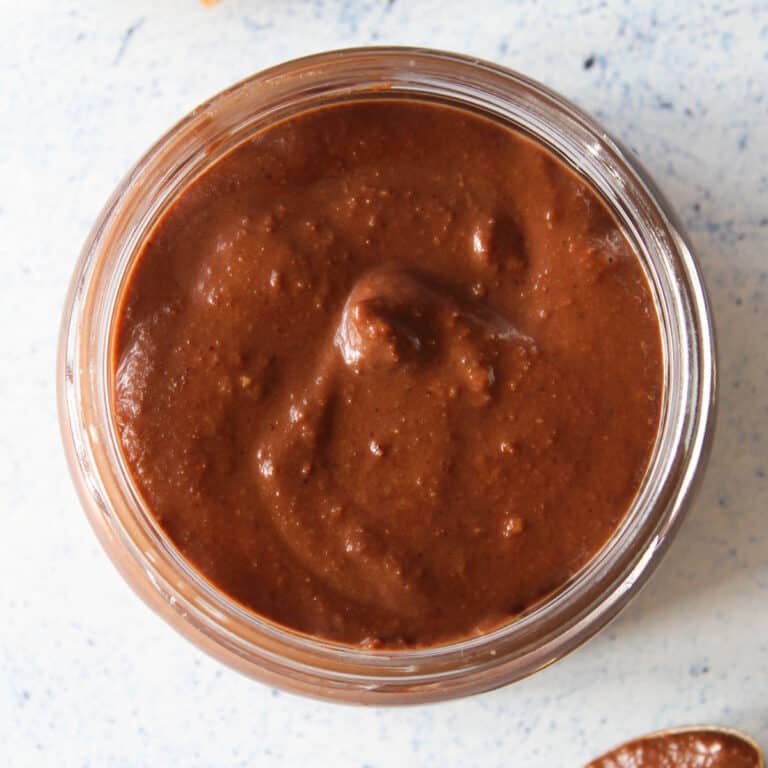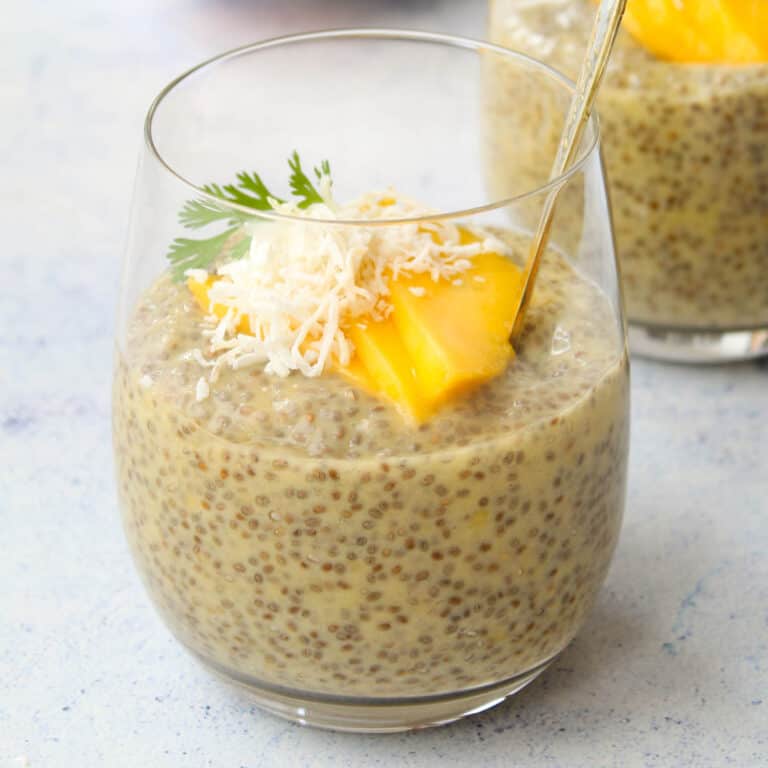Is Sushi Gluten-Free? Exploring Variations and Options
Sushi is undoubtedly one of the most beloved foods around the world. With its diverse range of flavors and textures, it has captivated the taste buds of millions. But if you, like me, follow a gluten-free diet, you might be wondering about its compatibility with gluten-free needs.
Whatever your situation, whether that is gluten sensitivity, non-celiac gluten sensitivity, or celiac disease, the question is: Is sushi gluten-free?

In this blog post, we will dive into the exciting world of sushi, exploring its variations, ingredients, and gluten-free options to provide you with a comprehensive understanding of whether sushi can be a part of your gluten-free journey.
Basics – sushi ingredients
First things first. Let’s have a look at the most common ingredients that are used to make sushi.
- Rice vinegar and sushi rice. Traditional sushi rice is prepared by mixing rice vinegar, sugar, and salt into cooked Japanese rice, giving it a distinct tangy flavor that complements the other ingredients. The good news for people with gluten sensitivities is that rice and rice vinegar are gluten-free, making the foundational component of sushi entirely safe to consume.
- Filling: Fresh, high-quality fish and seafood, such as raw fish and fish roe, are used most commonly in sushi. But vegetables such as cucumbers, avocado, and carrots are popular options too. Which are all gluten-free of course.
- Wrap it up with Nori. Nori sheets, made from edible seaweed, envelop the rice and fillings, creating a famous sushi roll. Nori sheets are gluten-free.
- Soy sauce. If you have been following a gluten-free diet for a while, you will certainly know that regular soy sauce contains gluten. Luckily for us, there is a great alternative, which is tamari sauce. I personally could not tell the difference if I did a blind tasting. It tastes just like the real thing.
- Wasabi. Real wasabi is made from the wasabi plant and is 100% gluten-free. However, in many Japanese restaurants, especially in cheaper sushi bars, imitation wasabi is widely used. Imitation wasabi is made with starch which could be from corn or from wheat. Ask to see the label to be on the safer side.
Sushi variations
It looks pretty good so far, don’t you agree? I wish it was that straightforward. Sushi is synonymous with variety. From simple rolls to intricate creations like the California roll and nigiri sushi, each type showcases a unique blend of flavors and textures and, of course, ingredients.
California roll. This is one of the most popular sushi rolls, which typically contains imitation crab meat, cucumber, and avocado wrapped in seaweed. Unfortunately for us, gluten-free eaters, the California roll is NOT gluten-free. The imitation crab, also called surimi, is made with wheat and is not gluten-free. If you’re looking for an alternative, try the Boston roll. It is made with real shrimp, avocado, and cucumber, it is gluten-free, and a much better alternative to fake crab meat anyway. Win-win here.
Tempura sushi rolls. Whether it is a shrimp tempura or chicken tempura, none of the tempura sushi rolls are gluten-free. Unfortunately, tempura batter is made with wheat flour. Unless you can ask the chef to prepare the batter with rice flour, stay away from tempura.

Sushi – Eating out
Now we know about all the ingredients that are usually used to make sushi, let’s see how we can make sure we are safe when eating out.
The awareness around gluten problems has fortunately grown in the last few years. This makes our life somewhat easier. Many sushi restaurants are attuned to the needs of their customers and offer gluten-free options. Many offer a gluten-free menu.
Navigating Gluten Concerns
While gluten-free menus are great, cross-contamination is a significant concern. While well-intended, sushi restaurants still handle both gluten-containing and gluten-free ingredients, raising the risk of cross-contamination.
The rice flour tempura, for example, can’t be fried in the same oil where the wheat tempura was fried before. Many dishes such as chicken or salmon teriyaki are prepared with teriyaki sauce which contains wheat.
To mitigate this risk, some establishments offer dedicated preparation areas and utensils for gluten-free dishes, ensuring a safer dining experience. But if this is not the case, ask!
Sushi Chef’s Expertise
Sushi chefs are skilled artisans who understand the intricacies of flavors and textures. When visiting a sushi restaurant, communicating your dietary needs to the sushi chef can lead to a customized gluten-free dining experience.
A skilled sushi chef can guide you toward gluten-free options and may even create specialty rolls tailored to your preferences. I had many wonderful experiences in Japanese restaurants despite my gluten intolerance.

Exploring Beyond Sushi
While sushi is a prominent aspect of Japanese cuisine, there are various other dishes to explore. Traditional Japanese dishes like sashimi, seaweed salad, and miso soup can be great gluten-free options. Dishes like sashimi or grilled fish can also provide a safe alternative.
Is sushi gluten-free?
As you can see, the world of sushi has much to offer for people adhering to a gluten-free diet or managing gluten sensitivities. By carefully selecting ingredients, communicating with sushi chefs, and choosing appropriate variations, sushi can indeed be a delicious and safe option.
So, the next time you step into a sushi restaurant, you can embark on a gluten-free culinary journey, savoring each bite without worry.

Making Sushi at Home
And of course, there is always an option of making your sushi or any other Japanese meal at home. On my blog, I have many delicious and easy-to-prepare Japanese recipes, from how to make sushi rice to a cheeky salmon nigiri in an ice cube tray. Make sure to explore them before you leave.
More Japanese Recipes
Share your dining experiences in the comments section below, and let’s have a conversation.
Have a great day!






Danke, ich habe Viel neues über Sushi Zubereitung erfahren